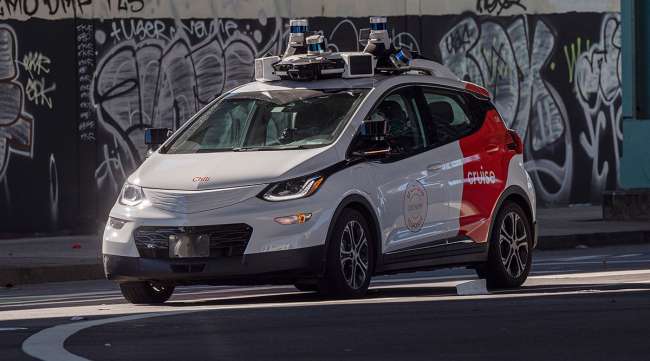GM’s Cruise to Slash 1,000 Jobs as Robotaxi Service Shutters

[Stay on top of transportation news: Get TTNews in your inbox.]
General Motors Co. is cutting almost half of the workforce in its Cruise driverless car unit, according to an internal memo and people familiar with the matter, part of a previously announced plan to halt robotaxi service and absorb the operations into its broader business.
Several of Cruise’s leaders, including CEO Marc Whitten, will leave this week in the overhaul, the company revealed Feb. 4 in an email to employees sent by Cruise President Craig Glidden. The total staff reductions amount to about 1,000 positions, said the people, who asked not to be identified discussing private matters.
The move to gut the staff punctuates GM’s rapid retreat from the robotaxi business and strategic shift on autonomy. As recently as late 2024, the company had been planning to take the driver out of its cars and charge fares in Texas this quarter.
GM made an abrupt change in December, saying it would no longer pursue robotaxi development, citing increasing competition and “the considerable time and resources that would be needed to scale the business.” Cruise’s senior management team hasn’t met since the announcement, one of the people said. The automaker plans to continue pursuing driver-assistance technology for use in consumer automobiles.

Whitten
With Cruise goes the company’s aspiration of using robotaxi fares to help double revenue by 2030. Instead, GM will focus its cash and resources on share buybacks and its electric vehicle business, which remains a priority even as President Donald Trump threatens to end consumer tax credits for EVs. GM said recently that its actions with Cruise would save about $500 million this year and twice as much in subsequent years.
The Detroit-based automaker may need to preserve its cash. Trump has promised tariffs on Mexico and Canada, which produce a significant portion of the vehicles GM sells in the U.S.
GM’s shares rose 1.4% Feb. 4 in New York. The Cruise job cuts were reported earlier by TechCrunch.
Executive Exits
Whitten’s departure comes just seven months after the former Amazon and Microsoft executive took the top job. Other departing Cruise executives include Chief Safety Officer Steve Kenner; Rob Grant, the global head of public policy; and Nilka Thomas, chief human resources officer, according to the memo.
Glidden, who also holds the title of chief administrative officer, will stay for a period to help with the transition, as will Mo Elshenawy, Cruise’s chief technology officer.
For GM, shuttering Cruise as a stand-alone business ends not only an expensive venture that cost more than $10 billion, but one that led to regulatory and reputational trouble. Cruise had resumed testing and operations after an incident in 2023 in which one of its cars dragged and injured a pedestrian. That led to investigations by federal agencies and in California. The company grounded the fleet, cut 25% of the staff and saw the departure of founder Kyle Vogt.
Alphabet Inc.’s Waymo remains as one of the only prominent robotaxi companies still operating in the U.S., along with May Mobility, a Michigan startup partly funded by Toyota Motor Corp.
Want more news? Listen to today's daily briefing below or go here for more info:




